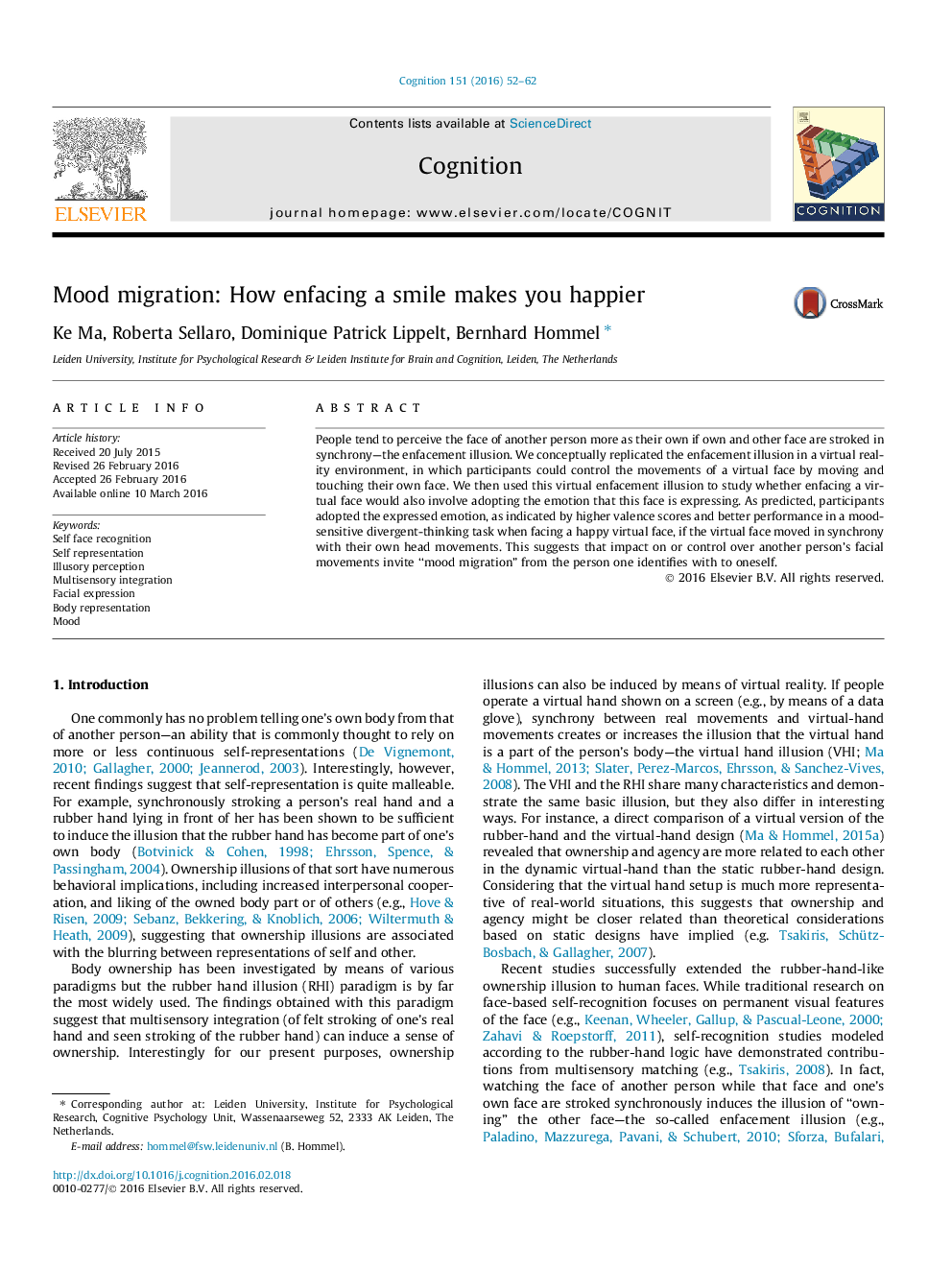| Article ID | Journal | Published Year | Pages | File Type |
|---|---|---|---|---|
| 926408 | Cognition | 2016 | 11 Pages |
•We conceptually replicate the enfacement illusion in a virtual reality environment.•Enfacing a virtual face involves adopting the emotion that this face is expressing.•Enfacing a happy virtual face improves mood.•Enfacing a happy virtual face boosts (mood-sensitive) creativity performance.•Features belonging to another person can migrate to the representation of oneself.
People tend to perceive the face of another person more as their own if own and other face are stroked in synchrony—the enfacement illusion. We conceptually replicated the enfacement illusion in a virtual reality environment, in which participants could control the movements of a virtual face by moving and touching their own face. We then used this virtual enfacement illusion to study whether enfacing a virtual face would also involve adopting the emotion that this face is expressing. As predicted, participants adopted the expressed emotion, as indicated by higher valence scores and better performance in a mood-sensitive divergent-thinking task when facing a happy virtual face, if the virtual face moved in synchrony with their own head movements. This suggests that impact on or control over another person’s facial movements invite “mood migration” from the person one identifies with to oneself.
